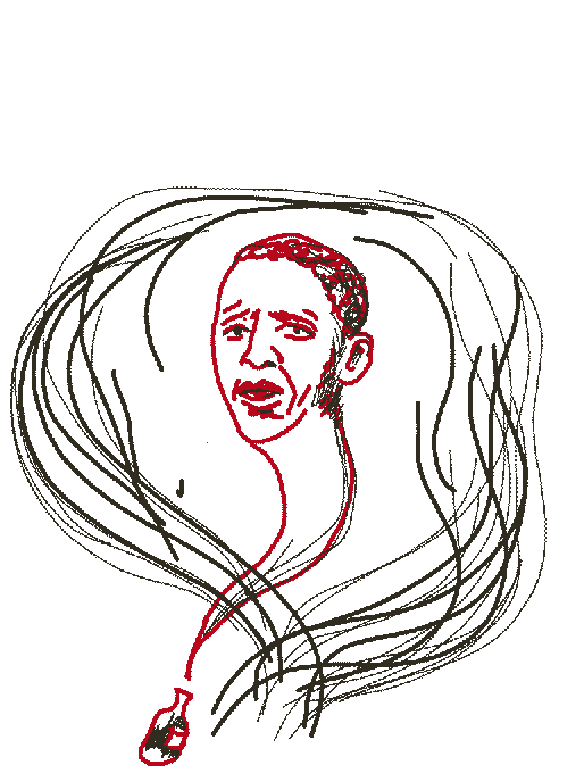Story highlights
Chicago alderman: "I do believe we were misled" about Laquan McDonald shooting
13 months passed from the time a police officer shot McDonald to death to when a video of the incidence was released
In April, Chicago City Alderman Howard B. Brookins Jr. was prepared to vote in favor of a $5 million settlement for the family of Laquan McDonald.
The city’s top attorney, known as the corporation counsel, warned that the police dashboard camera video that captured the shooting of the 17-year-old by a police officer had the potential for a long, litigious battle.
But one thing bothered the alderman.
The city said the dashboard camera video could not be released while the FBI and the U.S. Attorney investigated the shooting. Take our word for it, they said. The video was described to Brookins as “horrific.”
The video was indeed horrific, that much was true. But the alderman remains disturbed that it wasn’t shown to council members or the public until a judge’s order forced its release just last week.
“I do believe we were misled,” said Brookins. “It is evident now that at the time of the settlement, the tape could have been released. It did not take 13 months to look at this tape or interview witnesses. There was no need for significant delay.”
The timing of the 13 months remains dubious even after the arrest of Officer Jason Van Dyke.
On Tuesday, Chicago Mayor Rahm Emanuel said that the video was not released earlier because there was a concern that it could taint a federal and state investigation of McDonald’s shooting.
The mayor also announced that he asked for Chicago Police Superintendent Garry McCarthy’s resignation. The superintendent is an appointed position, and the mayor can fire anyone in that job.
He praised McCarthy’s work but said that his dismissal is part of an effort to work on building trust between the public and law enforcement.
“Superintendent McCarthy knows that a police officer is only as effective as when he has the trust of those he serves,” said Emanuel.
Illinois Attorney General Lisa Madigan echoed Emanuel’s statement about trust in asking the Department of Justice’s Civil Rights Division to open an investigation into the Chicago Police Department.
“Trust in the Chicago Police Department is broken. Chicago cannot move ahead and rebuild trust between the police and the community without an outside, independent investigation into its police department to improve policing practices,” Madigan said in a statement Tuesday.
The night of the shooting
Protesters have demanded that Emanuel also resign and that a federal investigation be focused on the behavior of public officials and their actions following the shooting, which happened just before 10 p.m. on October 20, 2014.
That night, police responded to calls of a man with a knife acting erratically in the Archer Heights neighborhood. On the far west side of the city, the neighborhood is a low-income, high-unemployment area. It is no stranger to police activity.
Several patrol cars responded, but only one officer fired his weapon.
The dashboard camera video captures the last moments of McDonald’s life. Six seconds after exiting the police car, Van Dyke fires, striking McDonald. The teen was walking away from a line of police cruisers. He writhes on the ground, and Van Dyke continues to shoot. McDonald is struck 16 times.
But that is not the story officers shared with the public on October 20.
After speaking to the officers involved, longtime Chicago Police Department spokesman and now Fraternal Order of Police spokesman Pat Camden faced news cameras. Camden explained McDonald was wielding a knife and was shot once in the chest. Camden said the officers had no choice.
“He was going at one of the officers. At that point, the officer defends himself,” said Camden. “When police tell you to drop a weapon, all you have to do is drop it.”
Local news reporters, relying on the statements of the police, relayed news about McDonald’s death. The unnamed officer was put on paid desk duty while the city opened an investigation into the shooting.
The dashboard camera video was not released. Police cited an ongoing investigation.
The next morning, the Cook County Medical Examiner conducted an autopsy on McDonald. The examiner lists the 16 wounds one by one: left scalp, neck, chest, elbow, arms, legs, hand, back. Nine of the gunshots entered from the back.
That autopsy doesn’t become public until February after the Invisible Institute, a Chicago-based nonprofit journalism organization, files a Freedom of Information Act request.
Officer had history of complaints before McDonald shooting
Rahm Emanuel’s re-election
A teenager’s life ending in a barrage of police bullets is a sad, yet familiar tale on the west side of Chicago. So familiar that few reporters noticed this one. The story grabbing all the news in early 2015 in Chicago was Mayor Emanuel’s re-election battle.
Emanuel, nationally once known as President Barack Obama’s fiery chief of staff, had returned to Chicago as its native son to run the city. His brusque personality chafed unions, council members and voters. He was blasted for his perceived anti-union policies and dubbed by critics as “Mayor 1%.”
He now faced a tough challenge from Cook County Commissioner Jesus “Chuy” Garcia, a liberal who touted himself as the politician who would fight for the people. Garcia forced Emanuel into a runoff making this Chicago’s first mayoral nail-biter since Richard M. Daley won his first term in 1989.
Garcia heaped criticism on Emanuel’s handling of violent crime, which saw homicides and shootings surge by double digits in early 2015.
On April 7, Emanuel won by double digits against Garcia.
The City Council meeting
Eight days later, Emanuel called the City Council to order. Among the items to be voted on was the settlement with McDonald’s family. Without any debate, the council voted to award the family $5 million.
The investigation into McDonald’s shooting was incomplete, the same reason cited by the city as to why the dashboard camera video couldn’t be released. The McDonald family had not filed any lawsuit against the city. The $5 million award was in advance of any legal action from the victim’s family.
“I think people were looking out for their own skin,” says Alderman Brookins. “People in the Police Department were looking to not charge the police officer.”
CNN made numerous calls seeking comment from the city and the Chicago Police Department. They went unanswered.
At the time, the police officer, Van Dyke, remained employed by the Chicago Police Department, his name still unknown. According to the Citizens Police Data Project, an online toolkit that houses police disciplinary information obtained from the city of Chicago, Van Dyke has had 20 complaints against him, 10 of which are listed as use of force complaints. The database shows that of the 20 complaints against Van Dyke, none resulted in discipline.
But all the silence was about to change.
The release of the video
Reporters began asking questions about the $5 million settlement. A freelance reporter filed a lawsuit asking for access to the dashboard camera video. Emanuel and the prosecutor, Cook County State’s Attorney Anita Alvarez, battled for months in court to keep the dashboard camera video under wraps.
On November 19, a judge ordered the release of the video.
In a news conference broadcast nationally, the city warned the video was graphic and urged calm on the streets.
Just hours before the city was to release the video, Alvarez charged Van Dyke with first-degree murder. In a news conference, Alvarez explained she had intended to charge Van Dyke for months but moved up her decision because of the timing of the video release.
“I felt compelled in the interest of public safety to announce these state charges today,” she said.
Van Dyke posted bail Monday night and is out of jail.
Family of man killed by Chicago police wants dashcam video released





